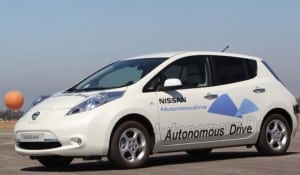 Research and Markets reported that automated driving will achieve significant growth. These vehicles are sometimes called autonomous, auto-piloted or robotic cars.
Research and Markets reported that automated driving will achieve significant growth. These vehicles are sometimes called autonomous, auto-piloted or robotic cars.
IBM and Google will be software vendors for the robotic vehicles according to Research and Markets, that reported that IBM has the lead with its excellent integrated reliable middleware.
Automated driving in the auto industry will mirror what happened with auto-piloting in the airline industry that saved labor, noted report.
Automated vehicle driving can be done anywhere just by connecting the car to the adaptive cruise control, adaptive steering and braking, and lane assist systems.
Robotic cars and trucks incrementally will add automated process to driving. As software is added to cars and trucks it is done in concert with modification to the steering, breaking, and other automotive systems. Autonomous functions for will be increasingly adopted.
Change will be incremental, we will not have fully functioning robot cars immediately, rather, steering, collision avoidance, parking, test driving, series of camera and radar based monitoring systems, lane assist, and adaptive cruise control are being implemented, presaging rapid adoption of robot cars and trucks as the various functions mature and work in the real world.
The development and deployment of connected auto-driven robotic cars will coincide w the deployment of appropriate roadway controls (V2V/V2I) funded by government programs.
Much of what has been learned thus far about robotic connected auto-driven cars is from military applications.
The robot car designs typically include hardware, the software middleware, the steering system, adaptive cruise control, many software applications, system integration and related services.
Major investments in research and development will be required to implement the incremental technology over the years.
Robot car and truck commercial autonomous car market shipments forecasts indicate that markets beginning to develop in 2014 will rise to $3.6 billion by 2019.